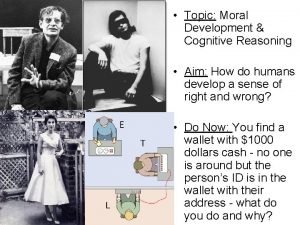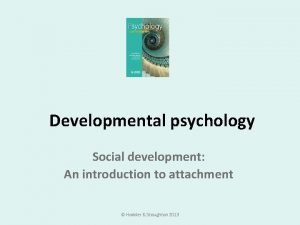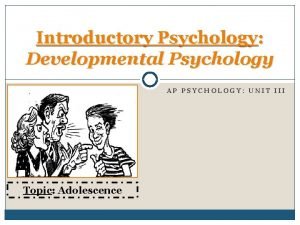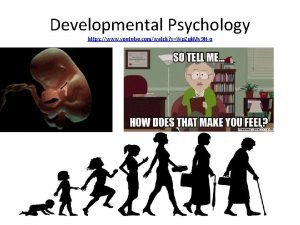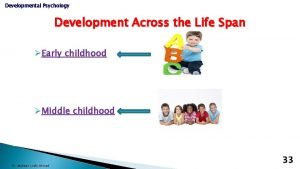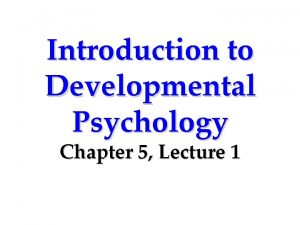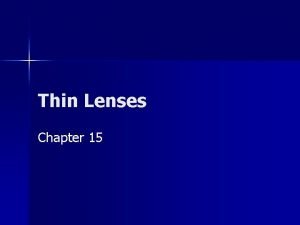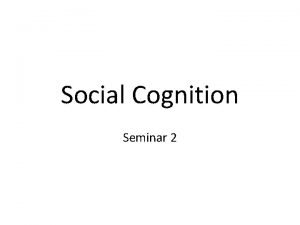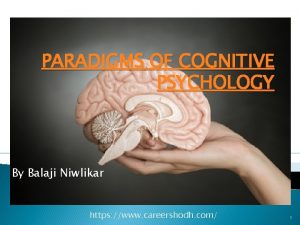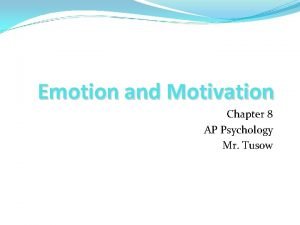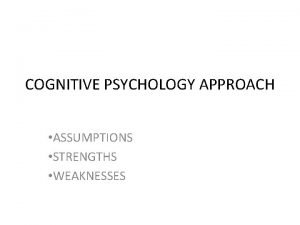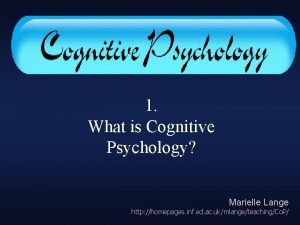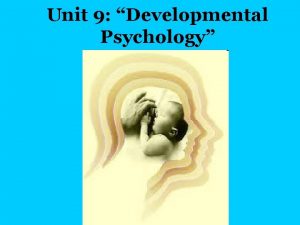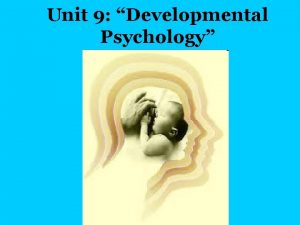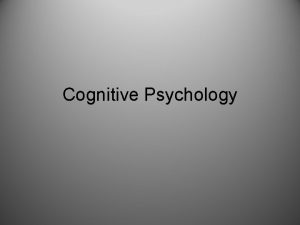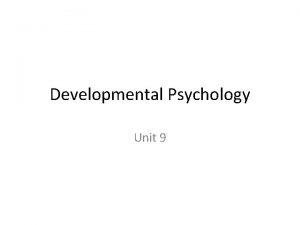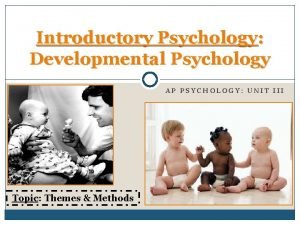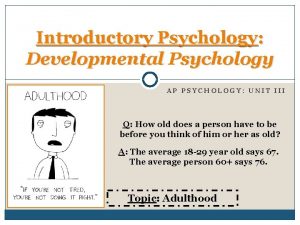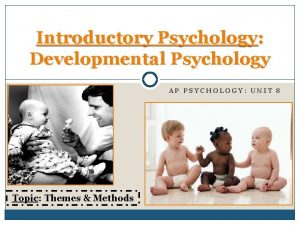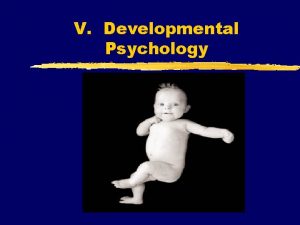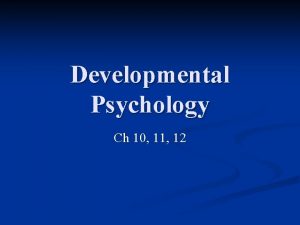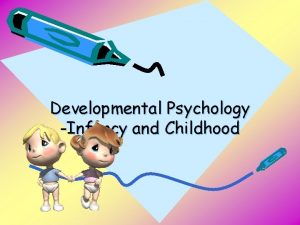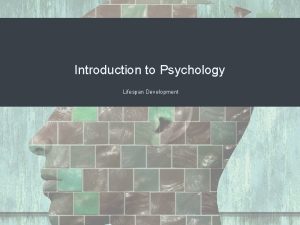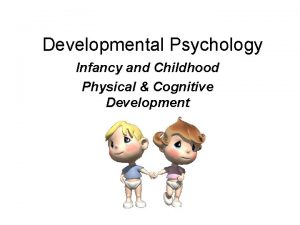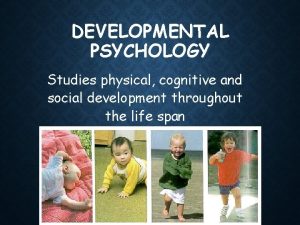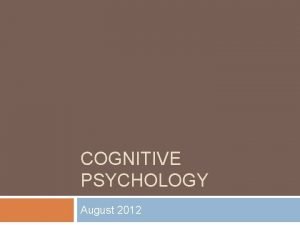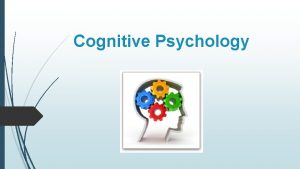Unit 9 Developmental Psychology examines the physical cognitive


























- Slides: 26

Unit 9: Developmental Psychology: examines the physical, cognitive, and social development across the lifespan, focusing on 3 major issues: 1. Nature v. Nurture 2. Continuity and Stages 3. Stability and Change

Prenatal Development and the Newborn Conception is AMAZING Out of 250 million tiny sperm, and 1 larger (relatively) egg, here you are! Zygote , aka the Germinal Stage 1 st 2 wks after conception Zygote = fertilized egg that begins 2 weeks of rapid cell division. conception, implantation, and the formation of the placenta (from the outer cells of the zygote). ½ do not survive the first 2 weeks “. . . the improbable, unbroken chain of events that produced us” 2

Prenatal Development and the Newborn Embryonic Stage 3 weeks-end of month 2 heart, spine and brain arms, legs, hands, feet, fingers, toes, eyes & ears Most miscarriages @ this stage, 3

Prenatal Development and the Newborn Fetal Stage 9 weeks after conception til birth marked by rapid growth Physical movement Sense of hearing Final 3 mo. = brain cells multiply rapidly Random statistic More infants were born in the month of September than any other month. Age of viability? 22 -26 weeks of age. December must be pretty romantic. . ❅❅❅ 4

Prenatal Development and the Newborn Genetic and Environmental Factors affect our development. Ex. Teratogens (harmful substances) Fetal Alcohol Syndrome and smoking have epigenetic effect (leaves chemical marks on DNA which can switch abnormalities on/off) Heavy Drinking: (more than 1 drink a day) Effects on child- possible FETAL ALCOHOL SYNDROME = Small head, heart defects, irritability, hyperactivity, delayed development, mental retardation, later= high risk of depression and suicide in adulthood Tobacco: Reduces oxygen and nutrients to fetus Increase in rates of miscarriages. “The children of women who experience extreme stress when pregnant are nearly 10 xs more likely to develop a personality disorder by the age of 30. ” - BBC Health 5

12 -15 weeks Fetus can grasp, frown, squint, suck its thumb 20 -24 weeks Sense of taste and smell formed. Can feel movement and may respond to sound 32 weeks Eyes open in the womb. Neural circuits as advanced as a newborn’s. I am Jayden Smith I am here because I love to give presentations. 6

And then the baby has to come out. . . 7

And now you are born. Welcome to the party! Things you can do: Reflexes Communicate Habituation- decrease In response to repeated stimuli. Recognize and like the smell of your mama…infants prefer facelike images. Maturation Motor Development Newborns are making Brain development connections that might Infant memory / unconsciously affect Infantile amnesia. them later. 8

Infancy and Childhood: Cognitive Development Jean Piaget=Boss Schemas + Assimilation vs. Accomodation 9

Examples of Piaget’s stages of cognitive development 10

Lev Vygotsky Emphasized the importance of social interaction on cognitive development Zone of Proximal Development (ZPD) Scaffolding framework offering temporary support Talking to yourself? (preschoolers do this as they perform tasks. . . this speech is internalized as we get older. . . usually : )

12

Autism Spectrum Disorder marked by social deficiencies and repetitive. Early behavior Impaired “theory of mind” Diagnosis (lack of perspective, ability important? Diagnoses increasing… to empathize with others, Possible treatments: mirroring) Children’s 1 in 68 American children programming that Varying levels of severity supports recognition 3 boys for every girl diagnosed of visual displays of Higher functioning = emotion. Why? greater success/outcomes NOT VACCINES. (No more Asperger’s) Instead*prenatal environment * Normal intelligence with *genetic basis --twin studies, exceptional skill random genetic mutations in sperm cells more common On the severe end, little in older males language. 13

Stop and answer Module 45 -47 questions Any remaining time is yours to work on your outline. 14

Close bonds of affection between infant and main caregivers Not instantaneous, Not clearly defined critical periods for attachment formation Module 48 Infancy and Childhood: Social Development Issue 1. Attachment 2 -3 mo. laugh/smile more w/M 6 -8 mo. Pronounced preference for M. 13 mo. peak of separation anxiety 15

Origins of attachment Theorists 1. Harry and Margaret Harlow* 2. Konrad Lorenz (1937) Critical Period and Imprinting (Mere Exposure Effect for kids) 16

Role of temperament Patterns of Attachment (Mary Ainsworth and The Strange Situation) Secure Attachment ● ● Most common M=secure base Upset when she leaves, quickly comforted upon return Sensitive, responsive, caring environment for upbringing Fathers are important too Insecure Attachment Anxious ● Still anxious w/M ● Upset when leaves, but not comforted upon return Avoidant ● Seeks little contact w/M ● Not distressed when leaves Divorce, neglect factors putting child at risk 17

Temperament- person’s characteristic emotional reactivity and sensitivity Textbook says heredity plays largest role in temp. development, and is often relatively stable i. e. shy, fearful infants often become introverted adolescents/ adults. New Zealand study: reactive, impulsive 3 yr old = more crime prone adults Self-Concept Major achievement in childhood is developing a positive sense of self By age 12 SELF-CONCEPT is formed (different from self esteem) A positive self-concept helps a child to be more confident, Independent, optimistic, assertive and sociable. (toddler and mirror) 18

Parenting Styles (Diana Baumrind) 1. 1. Authoritarian - parents impose strict rules and expect obedience. COERCIVE “Do it because I said so. ” Kids= lower self-esteem, poorer social skills Why? Permissive - parents submit to their children’s desires. They make few demands and use little punishment. UNRESTRAINING Kids = more aggressive and immature Why? Negligent - Parents are neither demanding nor responsive. Do not seek a close relationship with their child. They are inattentive, careless. UNINVOLVED Psychology Today Article: The Long-Term Effect of Neglectful Parents Authoritative - parents are both demanding and responsive. They set rules, enforce them, but also provide reasoning behind the rules. When children are older, they encourage open discussions about making the rules and setting expectations. CONFRONTIVE Kids= Highest self-esteem, more self-reliant, better social skills 19

Adolescence MORAL DEVELOPMENT Teen years Puberty Brain Development Impulsivity 20

Lawrence Kohlberg Created the model of how moral reasoning develops. Derived from Piaget’s work Emphasis on moral reasoning instead of overt behavior 6 stages, but 3 levels 21

“ 22 Adulthood: Physical, Cognitive, Social Development (Module 54) Good news, Life expectancy has increased and a lot of the deterioration that will occur can be lessened or delayed by lifestyle choices. And you might hang on to celebrate holidays! (Death-deferral phenomenon) Bad news, we are still mortal. RIP us. Also- gals outlive males. 4. 7 years longer

Adulthood 3 stages: Early Adulthood (20 s-30 s) *Start of decline = mid 20 s Middle Adulthood (40 s-65) Late Adulthood (after 65) Physical changes are noticeable in middle adulthood Gradual decline of fertility, then menopause Sexual activity usually lessens Visual acuity decreases - not as much light to the Retina. Immune system weakens - more cancer, pneumonia. (but less colds and flus anitbodies) Aging brain→ slower reaction time, poorer memory, parts of brain experiencing atrophy leading to a reduction in brain weight by 5% by 80 years old. ) **Fit bodies = fit minds** 23

Adulthood Social Development Good News? moods less intense and more enduring than in adolescence Intimacy Ex. Marriage 95% of Americans have either married or want to marry. Keys to happy marriage Similarity of interests/beliefs Don’t live together (oops) More + interactions than negative Role of having children (so The myth of the midlife crisis 24

Adulthood Later life provides challenges Smaller social network, greater loneliness. Suicide risk actually increases in older people Ultimately the goal of life is to live a life of integrity ( Erikson) Living a life that is meaningful and worthwhile. 25

The End 26
 Ap psychology unit 9
Ap psychology unit 9 Authoritariam
Authoritariam Cognitive and non cognitive religious language
Cognitive and non cognitive religious language Lawrence kohlberg developmental psychology
Lawrence kohlberg developmental psychology Research methods in developmental psychology
Research methods in developmental psychology What is psychology
What is psychology John bowlby attachment theory
John bowlby attachment theory Adolescence ap psychology
Adolescence ap psychology Devonte is a graduate student in developmental psychology
Devonte is a graduate student in developmental psychology Ucf psychology classes
Ucf psychology classes Youtube
Youtube Psychology
Psychology Chapter 5 developmental psychology
Chapter 5 developmental psychology Chrono cyclegraph
Chrono cyclegraph Unit 5 science test 7th grade
Unit 5 science test 7th grade Securing information systems
Securing information systems Work study definition
Work study definition Sherlock holmes examines a clue by holding his
Sherlock holmes examines a clue by holding his Nroc developmental english unit 6
Nroc developmental english unit 6 Self fulfilling prohecy
Self fulfilling prohecy Paradigms of cognitive psychology
Paradigms of cognitive psychology History of cognitive psychology
History of cognitive psychology Ap psychology chapter 8 emotion and motivation test
Ap psychology chapter 8 emotion and motivation test Assumptions of cognitive psychology
Assumptions of cognitive psychology Cognitive psychology concepts
Cognitive psychology concepts Cognitive economy psychology definition
Cognitive economy psychology definition Computer metaphor in cognitive psychology
Computer metaphor in cognitive psychology



